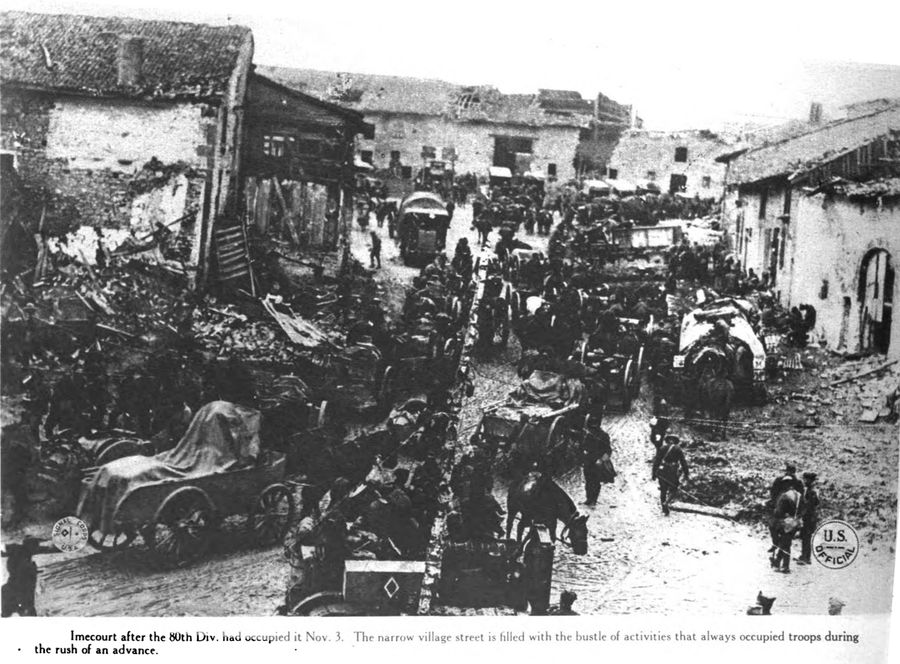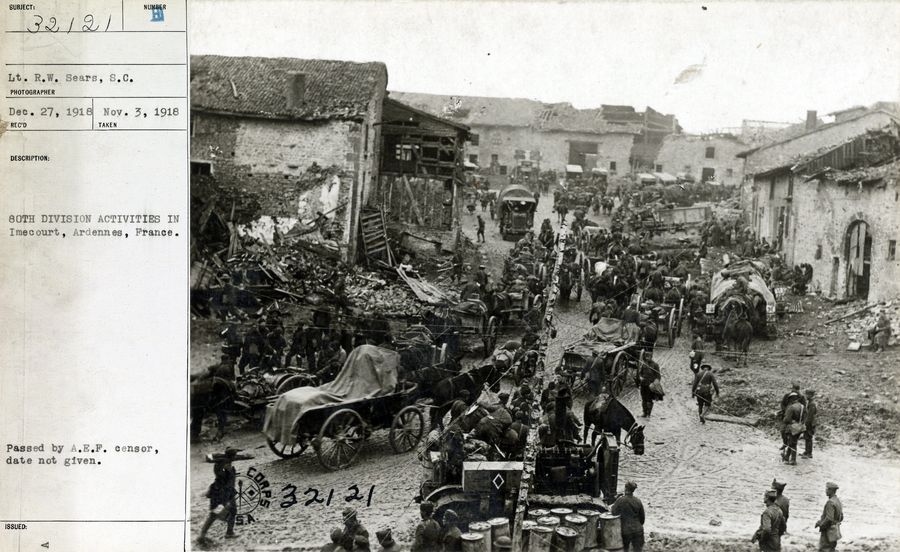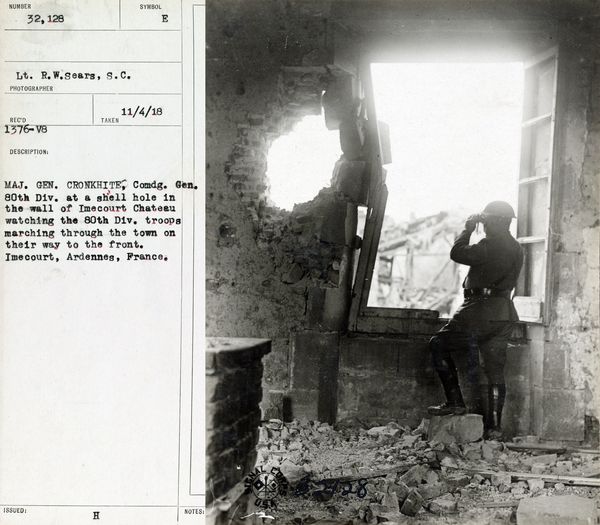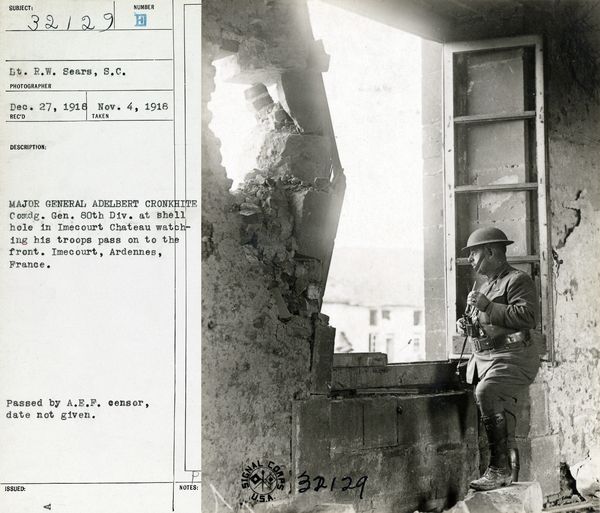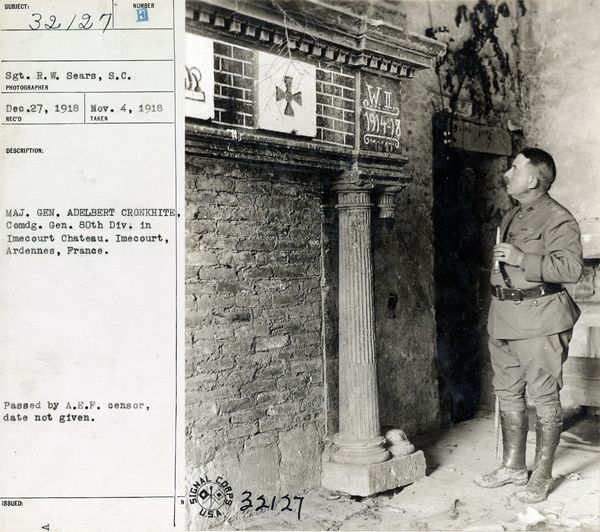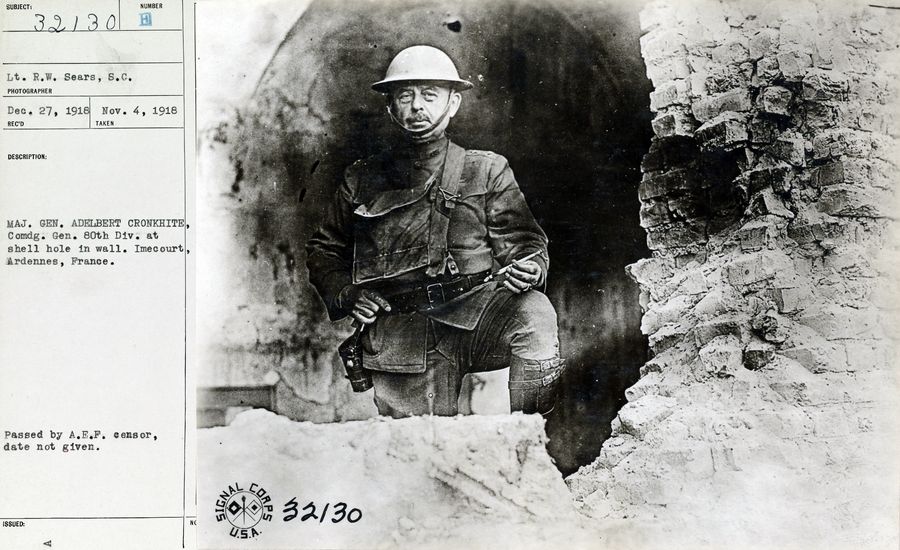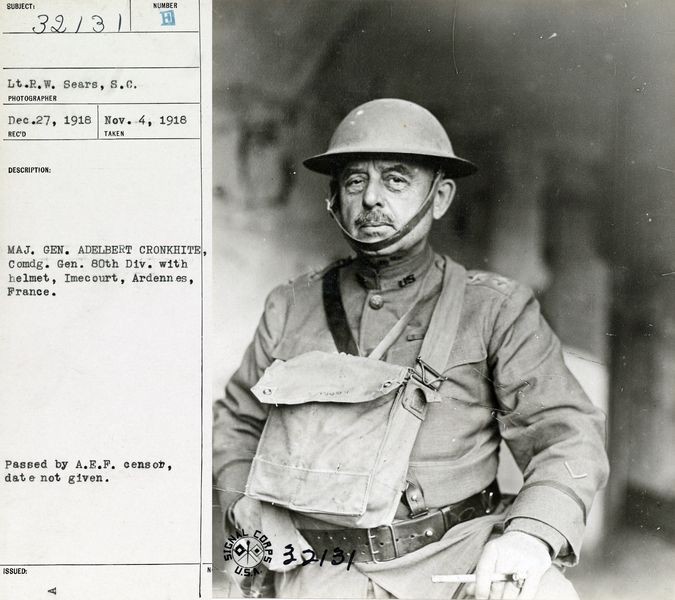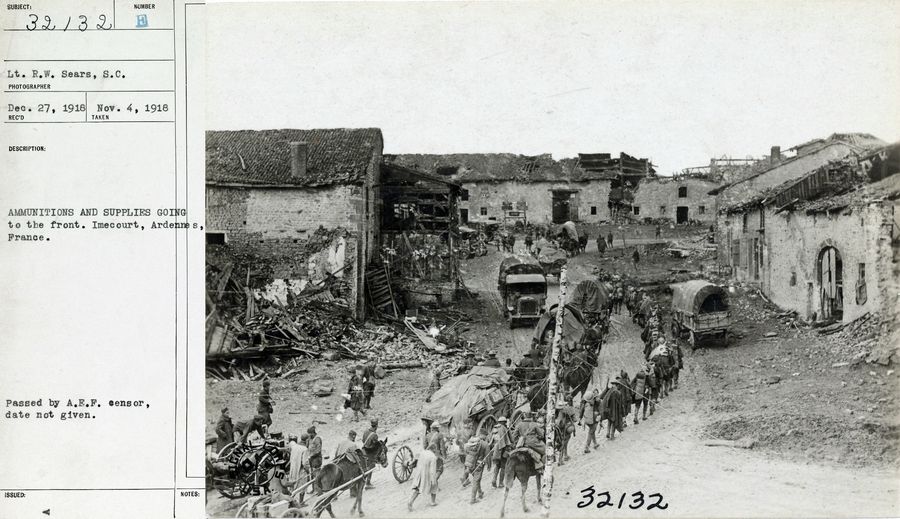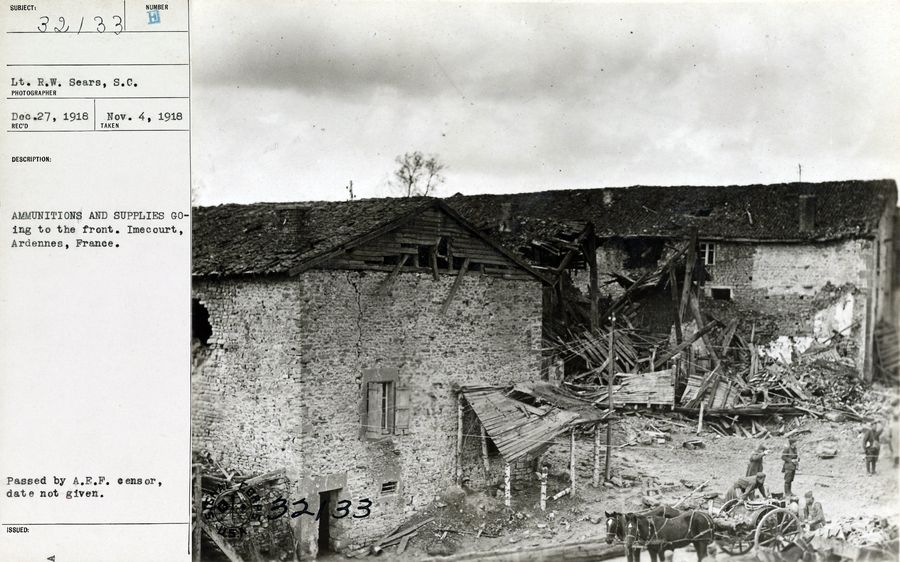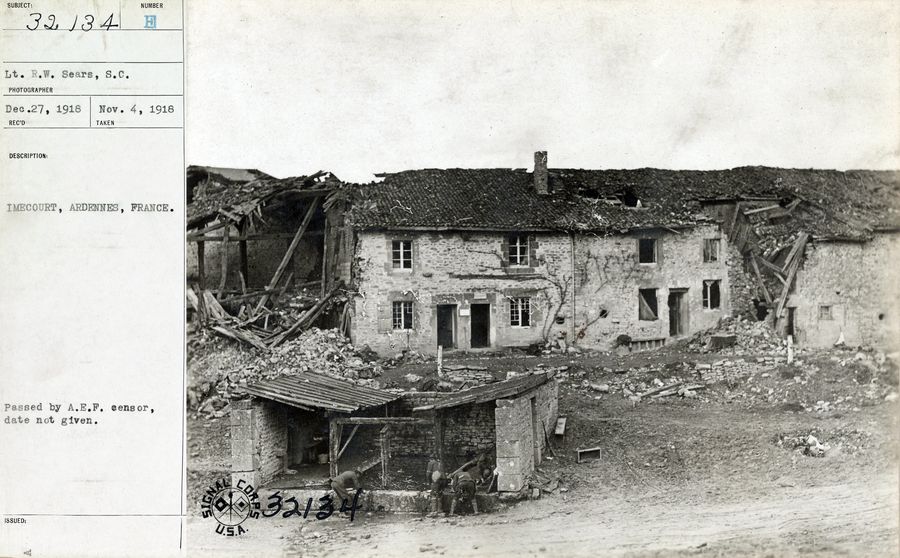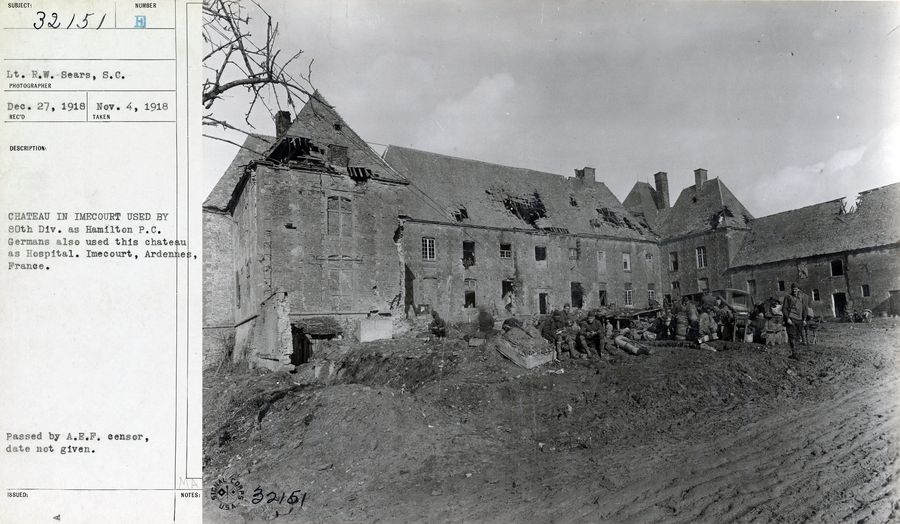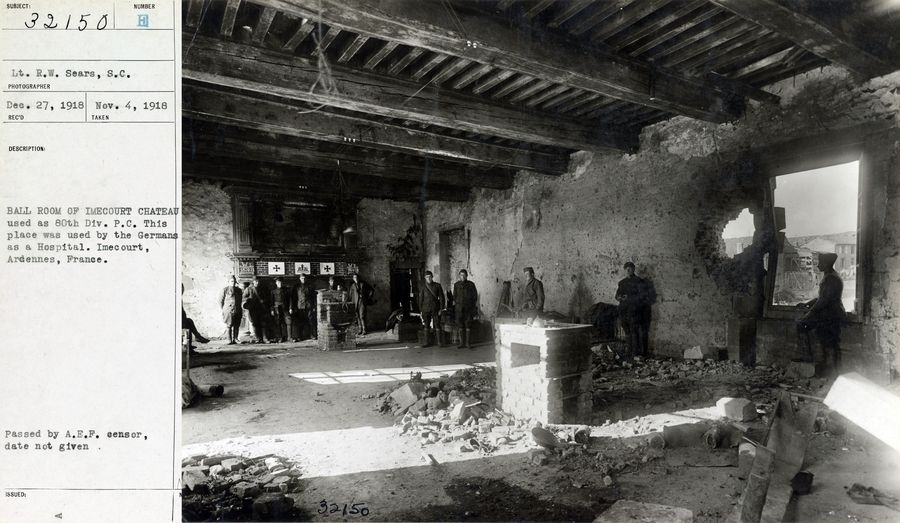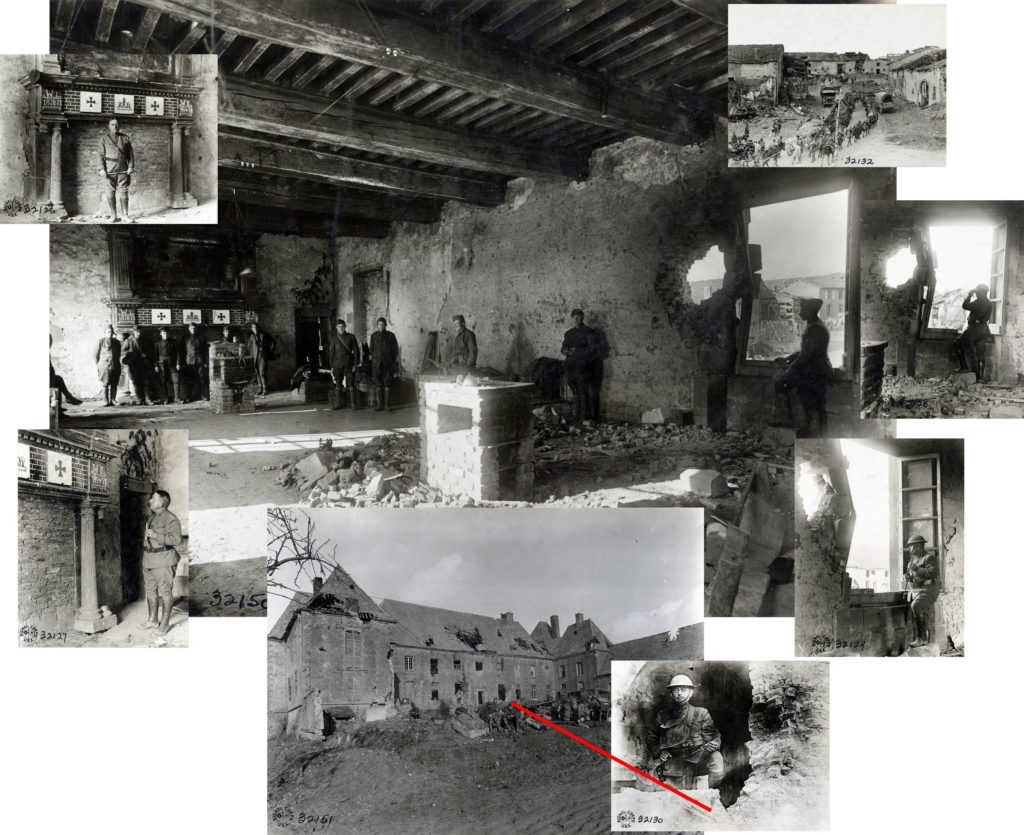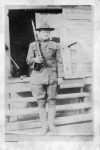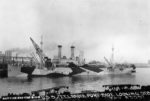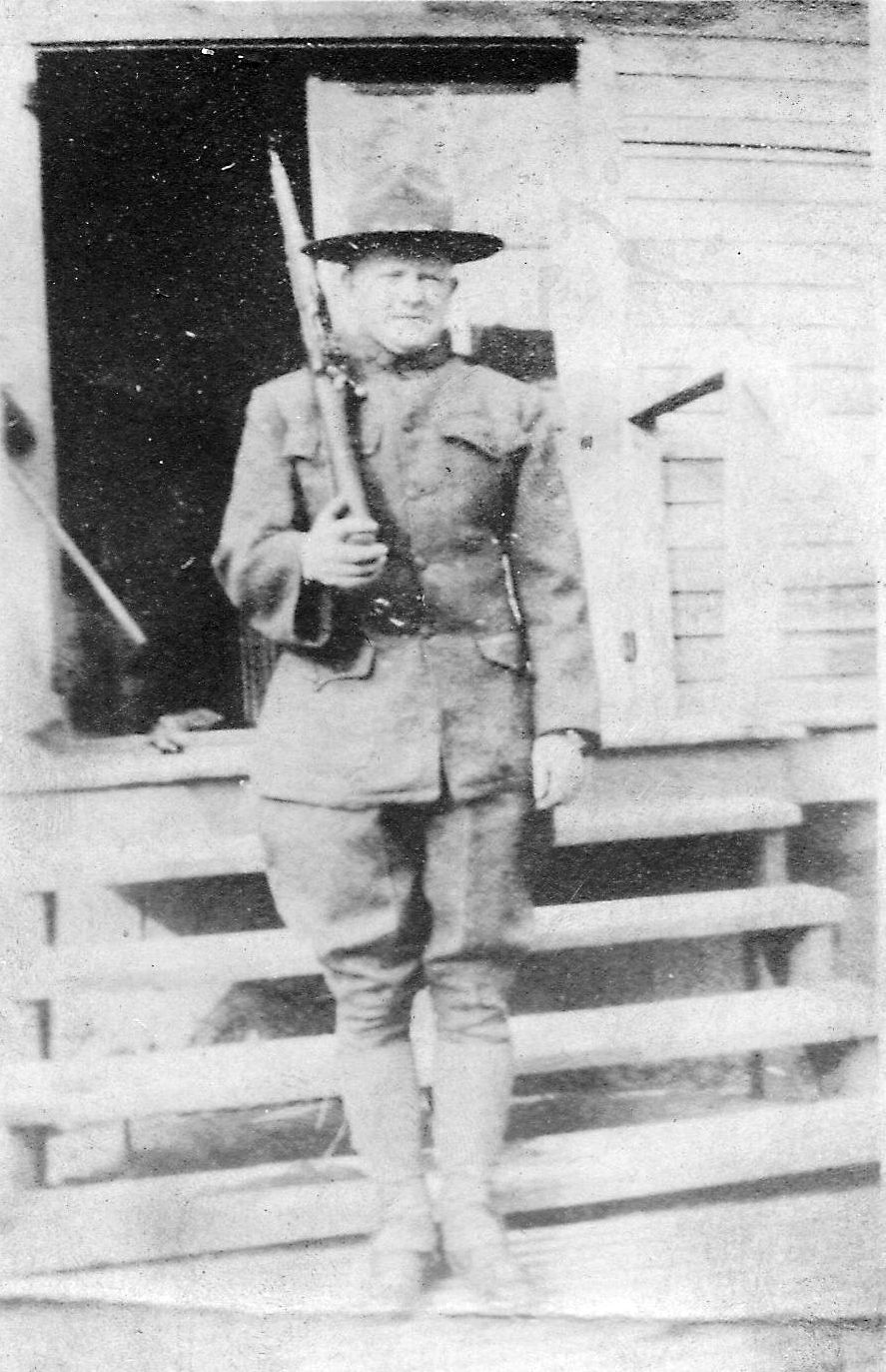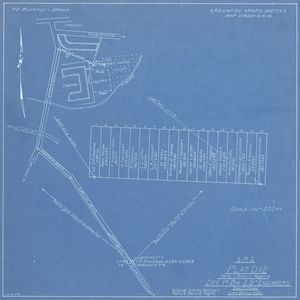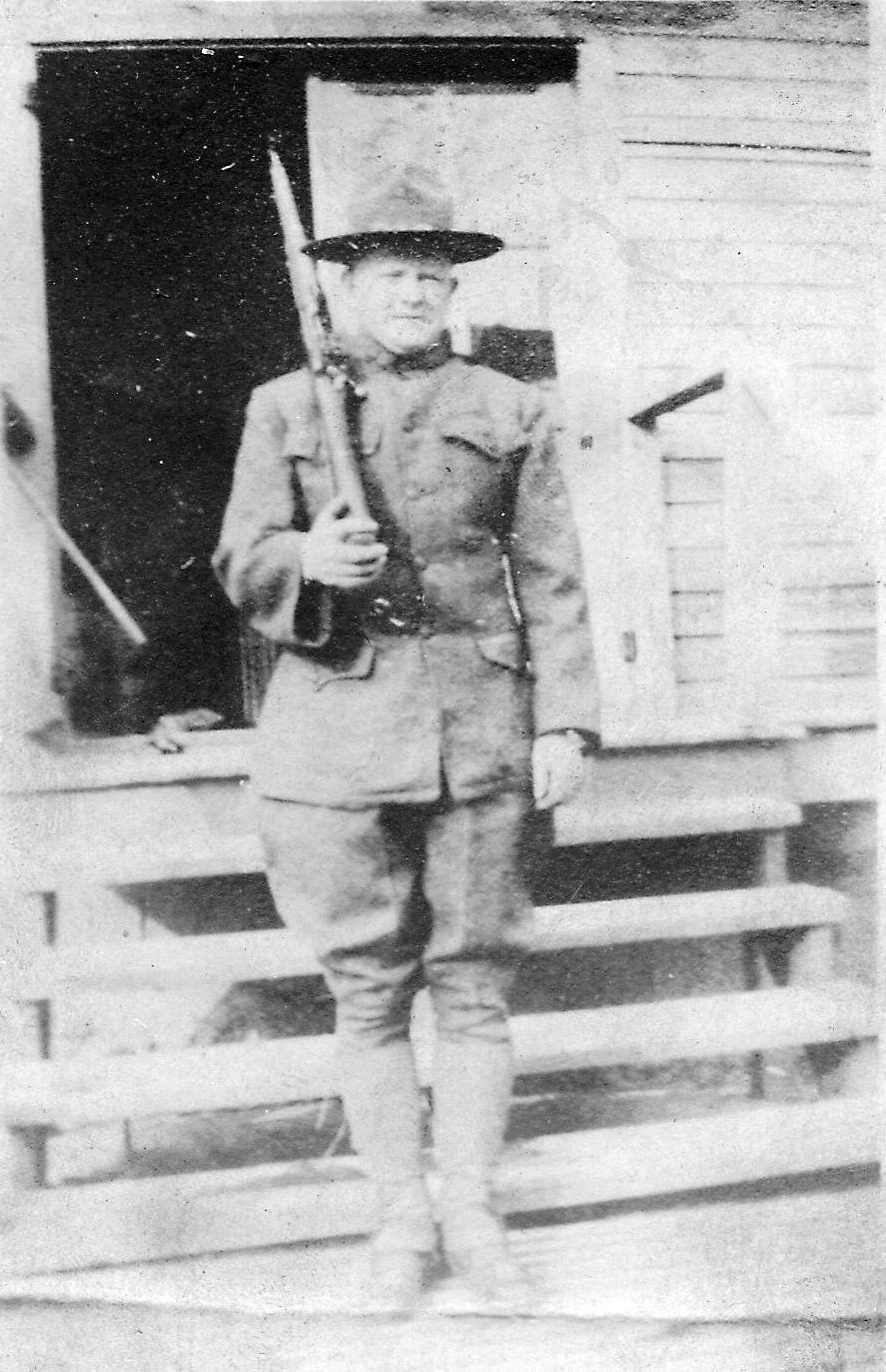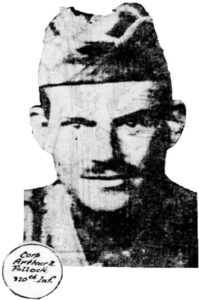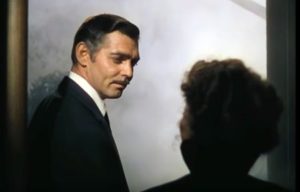 A motion picture is a series of still photographs displayed in rapid succession. You probably know the line spoken just before the photograph at left was taken. That’s because you already saw Gone With the Wind. If you hadn’t, I could show you more and more still photos until eventually the scene came to life.
A motion picture is a series of still photographs displayed in rapid succession. You probably know the line spoken just before the photograph at left was taken. That’s because you already saw Gone With the Wind. If you hadn’t, I could show you more and more still photos until eventually the scene came to life.
A historical photograph is an instant in time. Like a single frame from a movie, it provides limited information. When you can add additional photographs taken about the same time, you get a better perspective and therefore a greater appreciation.
I learned my granduncle, Russell T. Stewart, was killed in action during World War I near the village of Imécourt, France on November 2, 1918. I found a published photograph showing the 80th Infantry Division, Russell’s division, marching through Imécourt the next day, November 3.1
There is also a short video clip showing a soldier using binoculars looking at the same scene as in the photograph.2
Imécourt was occupied at 11:22 a.m. on November 1, 1918 by the 160th Brigade, 80th Division. The battle continued all afternoon and into the night. An offensive attack in the early morning of November 2 claimed Russell’s life, after which the enemy retreated. Later in the day the command posts for both the 160th Brigade and the 80th Division were moved to Imécourt, where they remained until November 4, 1918.
These photographs and motion pictures were taken by the Army Signal Corps in an effort to document the American war effort.3 They took thousands of such pictures. The published photo was indeed apparently taken November 3.
After consulting an index, I was able to find several other related photographs.4 Together, they add perspective to the events during those first few days of November. I modified the original image layout to make the captions more readable.
It turns out the video was a photo opportunity for Major General Cronkhite, who commanded the 80th Division. It is he who is using the binoculars in the video clip. He posed for a few other photos as well. They were all probably taken November 4 well after Imécourt had been captured November 1 and it was secure from enemy attack November 2. General Cronkhite’s command post was probably about to be moved from Imécourt to Buzancy as the last of the Division’s supply train moved through.
Here, another view of the road through the village taken one day later than the other. Traffic and supplies had significantly lessened.
Most photos were taken from the windows of the Chateau d’Imécourt, which was built in the early 1600s. It was used by the enemy as a hospital and sustained damage from artillery shells. Later it was completely destroyed by an accidental fire while occupied by American troops.
One photo in particular gives a sense of the surroundings and puts all the others in perspective.
Footnotes
- William Emmet Moore and James Clayton Russell, U. S. Official Pictures of the World War, Showing America’s Participation, Washington, DC: Pictorial Bureau, 1920.
- United States National Archives, Meuse-Argonne Offensive, September 26 to November 11, 1918, 80th Division, National Archives Identifier: 24921, Local Identifier: 111-H-1419, YouTube (https://www.youtube.com/watch?v=ZZ6PtbHehcw : viewed November 11, 2018).
- United States, War Department. Army War College. Historical Section. World War I Branch. ca. 1918-ca. 1948, Record Group 111: Records of the Office of the Chief Signal Officer, 1860 – 1985, National Archives Catalog. (https://catalog.archives.gov/ : downloaded November 11, 2018). To find an individual image, search for “111-SC-nnnnn”, where nnnnn is the photograph number.
- United States Army Signal Corps, Catalogue of Official A.E.F. Photographs, Taken by the Signal Corps, USA (Washington: U.S. Government Printing Office, 1919). Google Books (https://books.google.com/books?id=DJZDAAAAYAAJ : accessed November 11, 2018). Introductory text notes, “The conditions under which these photographs were taken, captioned, and speedily forwarded have inevitably caused numerous errors.”

